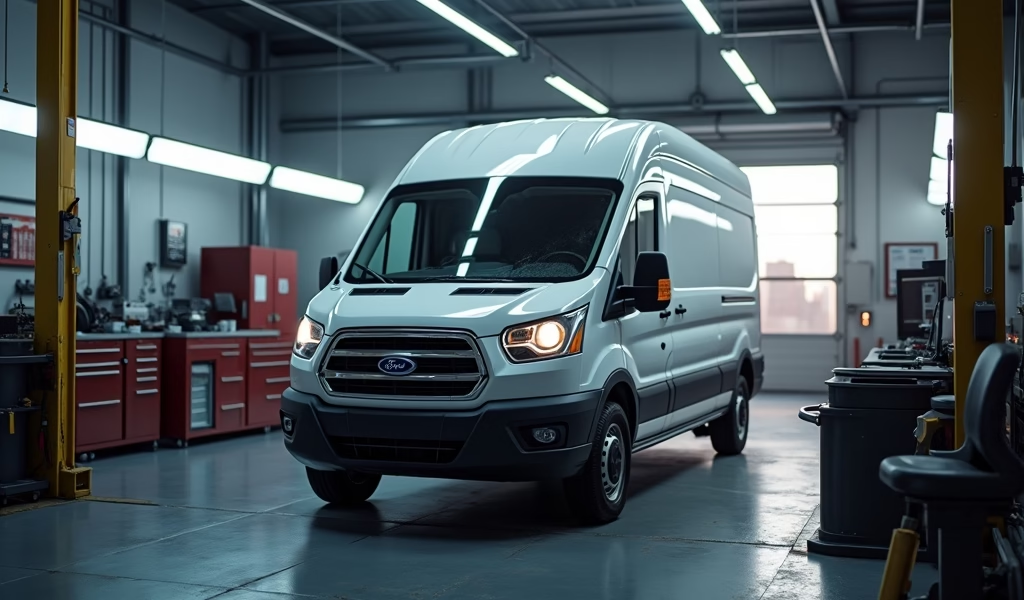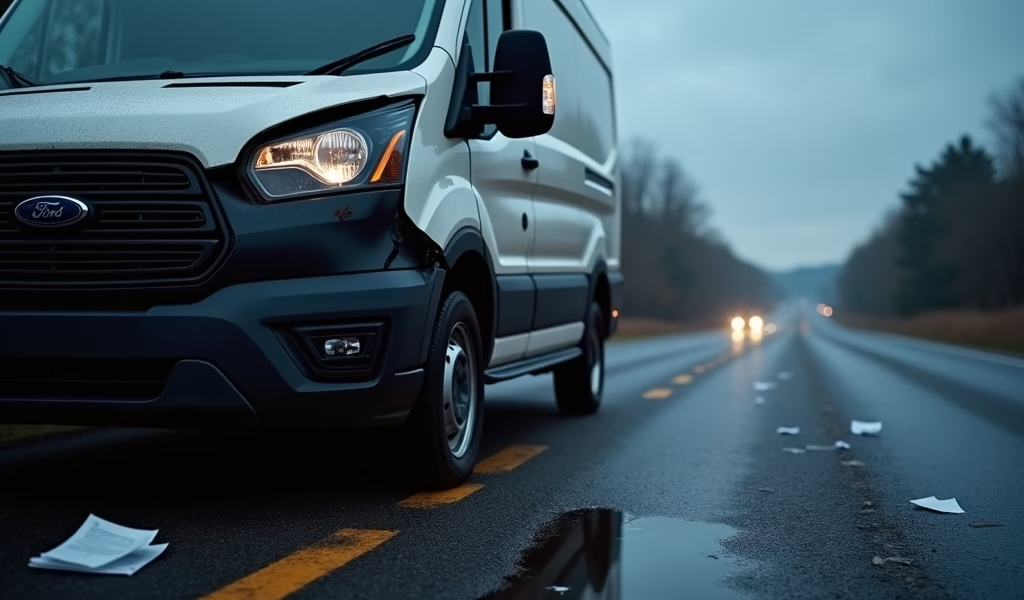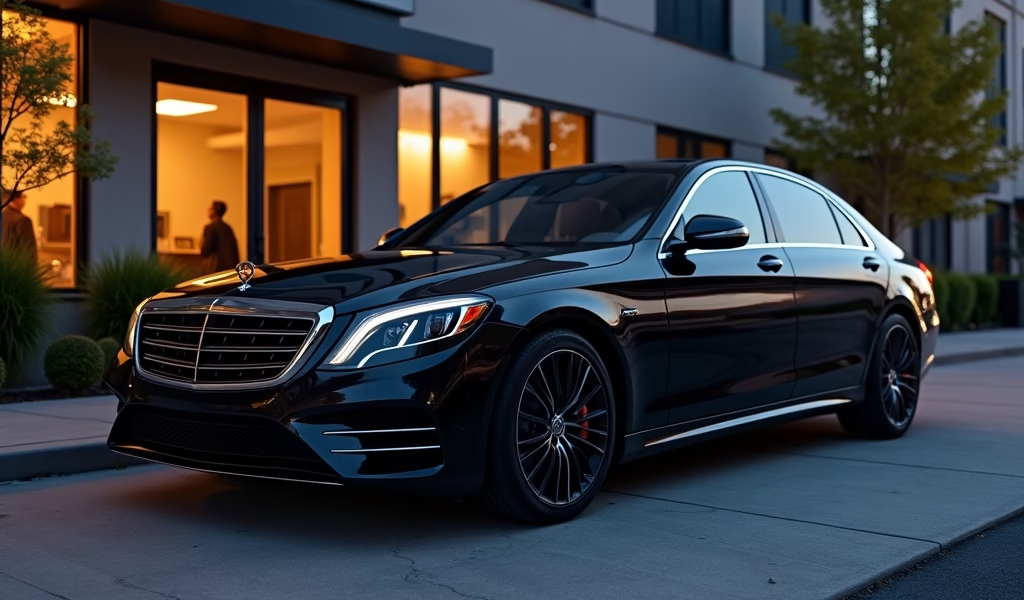Overview
This guide shares five essential strategies for handling company vehicle accidents effectively, including thorough documentation, understanding employer liability, navigating insurance claims, leveraging technology for evidence, and maximizing settlement negotiations. The article emphasizes the importance of acting quickly but cautiously after an accident and working with a specialized lawyer who can help secure settlements typically 3-4 times larger than self-handled claims.
Table of Contents
- Understanding Company Vehicle Accidents: What You Need to Know
- Hack #1: Document Everything Immediately After the Accident
- Hack #2: Understanding Respondeat Superior and How It Helps Your Case
- Hack #3: Know When to Separate Personal and Company Insurance Claims
- Hack #4: Leveraging Technology to Strengthen Your Company Vehicle Accident Claim
- Hack #5: Negotiating Tactics That Can Maximize Your Settlement
- Conclusion: Taking Action After a Company Vehicle Accident
- Frequently Asked Questions
Understanding Company Vehicle Accidents: What You Need to Know
Been in a fender bender while driving the company truck? Trust me, you’re not alone. Company vehicle accidents happen more often than you might think, and navigating the aftermath can feel like trying to change your oil with oven mitts on – awkward and potentially messy. As someone who’s helped folks through this process countless times, I can tell you that having a good company vehicle accident lawyer in your corner makes all the difference.
Here’s the deal – when you’re driving for work, accidents get complicated fast. Suddenly, it’s not just about you and the other driver. Your employer, their insurance company, and possibly several other parties get pulled into the mix. It’s like having extra passengers you never asked for!
The good news? With the right approach, you can navigate these choppy waters and come out ahead. According to the Bureau of Labor Statistics, transportation incidents remain the most frequent type of fatal work injury, which means these cases are taken seriously by courts and insurance companies alike.
In this guide, I’ll share five game-changing hacks that can help you work more effectively with your company vehicle accident lawyer. These aren’t your run-of-the-mill tips – they’re insider strategies that can potentially transform your case from “meh” to “wow.” Let’s get those wheels turning!
Hack #1: Document Everything Immediately After the Accident
Picture this: You’ve just had an accident in the company van. Your heart’s racing faster than a V8 engine, and your mind’s all over the place. This is exactly when you need to slow down and start documenting – it’s like taking baseline measurements before fixing an alignment problem.
The moments right after an accident are gold for your case. Your company vehicle accident lawyer will tell you the same thing, but many folks miss this critical window. So grab your phone and start collecting evidence like you’re on a scavenger hunt:
- Take wide-angle shots of the entire accident scene from multiple angles
- Snap close-ups of all vehicle damage (yours and theirs)
- Photograph any visible injuries (with permission if it’s someone else)
- Get clear images of all license plates, driver’s licenses, and insurance cards
- Take pictures of any skid marks, traffic signals, or road conditions that might be relevant
But here’s where most people stop, and that’s a mistake. Your documentation shouldn’t end with photos. Jot down exactly what happened while it’s fresh in your mind. Include weather conditions, visibility, and what you were doing right before the crash. Was there a delivery deadline? Were you following GPS directions provided by your employer? These details might seem trivial now, but they can become pivotal when your auto accidents lawyer is building your case.
Pro tip: Create a dedicated accident folder on your phone right now, before you need it. When adrenaline is pumping, having a system already in place makes documentation much easier.
Remember, insurance adjusters and defense attorneys will try to poke holes in your story later. Solid documentation is like having a good set of defensive driving skills – it protects you when things get dicey.

Hack #2: Understanding Respondeat Superior and How It Helps Your Case
Let’s talk about a legal principle that sounds fancy but is actually your best friend in company vehicle cases: respondeat superior. It’s Latin for “let the master answer,” but in plain English, it means your employer is often responsible for what happens while you’re on the clock and driving for work purposes.
Think of it this way – when you’re driving that company truck, you and your employer are connected like an engine and transmission. What you do, they’re responsible for (within reason). This principle can be a game-changer for your case, but only if you and your company vehicle accident lawyer know how to leverage it properly.
Here’s how to make respondeat superior work for you:
- Clearly establish you were “in the course and scope” of employment when the accident happened
- Document any instructions from your employer that contributed to the accident (like tight delivery schedules)
- Gather evidence that the vehicle was being used for its intended work purpose
- Identify any company policies about vehicle use and whether they were being followed
I once worked with a delivery driver who thought his case was hopeless because he’d made a wrong turn right before the accident. Turns out, that didn’t matter one bit under respondeat superior. He was still making deliveries for his company, wrong turn and all.
But watch out – this principle has some potholes. If you were on a significant personal detour (like picking up your dry cleaning) or violating company policy (like texting while driving when it’s prohibited), your employer might try to argue they’re not liable. Your company vehicle accident lawyer will need to counter these arguments effectively.
Remember, respondeat superior typically brings in your employer’s larger insurance policy and deeper pockets, which can mean better compensation for your injuries and damages. It’s like upgrading from a compact spare to a full-sized tire – much more substantial support when you need it most.
Hack #3: Know When to Separate Personal and Company Insurance Claims
Insurance after a company vehicle accident can get as tangled as a rat’s nest of wiring under the dashboard. Many folks don’t realize there might be multiple insurance policies in play – and knowing how to navigate them can put thousands more dollars in your pocket.
Here’s the thing – when you’re in an accident with a company vehicle, there’s usually more than one insurance policy that could cover your damages. Understanding when to tap into each one is a strategy that even some motor vehicle accident lawyers miss.
Let’s break down the potential insurance coverage:
- The company’s commercial auto policy (primary for the vehicle)
- The company’s general liability policy (may provide additional coverage)
- Your personal auto insurance (may apply in certain circumstances)
- Your health insurance (for medical treatment)
- The other driver’s insurance (if they were at fault)
The magic happens when you know which policy to approach first, and when to keep them separate. For instance, did you know that making a claim on your personal policy might not be necessary and could raise your rates, even though you were driving for work?
I remember helping a pharmaceutical rep who was initially told by his employer to use his own insurance after a minor accident in his company car. Had he done that, he would have paid a $500 deductible and seen his premiums increase. Instead, we properly filed through the company’s commercial policy, which had a zero-deductible provision for employees.
Pro tip: Get copies of all relevant insurance policies as soon as possible after the accident. Your company vehicle accident lawyer needs these to map out the optimal claim strategy. Many employers are reluctant to hand these over, but you have rights to this information.
Also, watch out for insurance adjusters who try to get you to provide recorded statements before you’ve consulted with your lawyer. That’s like letting someone tinker with your engine before checking their credentials – potentially disastrous!
Hack #4: Leveraging Technology to Strengthen Your Company Vehicle Accident Claim
We’re living in the golden age of evidence, folks! Twenty years ago, proving what happened in an accident often came down to your word against theirs. Today, technology has transformed how company vehicle accident cases are built and won.
Smart company vehicle accident lawyers are using tech to create irrefutable evidence that can dramatically increase settlement offers. It’s like having a high-definition dashboard camera for your legal case.
Here’s how to harness technology for your claim:
- Telematics data from the company vehicle (speed, braking patterns, GPS location)
- Cell phone records (to prove you weren’t texting, or the other driver was)
- Security camera footage from nearby businesses
- Traffic light cameras and DOT highway cameras
- Digital logbooks and dispatch records
- Weather data archives to confirm conditions at the exact time of the accident
The key is acting fast. Security footage often gets deleted within days, and some telematics data isn’t stored long-term. Your attorney car accidents specialist should send preservation letters immediately to ensure this digital gold doesn’t disappear.
I worked with a delivery truck driver who was blamed for running a red light. The company was ready to terminate him until we discovered a nearby bank’s ATM camera had captured the entire intersection. That footage clearly showed our client had a green light, completely exonerating him.
Even your own smartphone can be a treasure trove of evidence. Your location history, fitness tracker data, or work apps might contain timestamps and location data that support your version of events. According to a study by the National Highway Traffic Safety Administration, electronic data is now used in over 70% of commercial vehicle accident investigations.
Remember, in the world of accident claims, data doesn’t lie – and the side with the best data often wins.

Hack #5: Negotiating Tactics That Can Maximize Your Settlement
When it comes to settling company vehicle accident claims, there’s a world of difference between accepting what’s offered and strategically negotiating for what you deserve. It’s like the difference between buying a car at sticker price versus knowing how to haggle like a pro.
Many folks don’t realize that insurance companies’ first offers are almost always lowball figures – they’re testing to see if you’ll settle for less. A skilled company vehicle accident lawyer knows this is just the opening move in a complex negotiation game.
Here are some negotiation tactics that can transform your settlement:
- Timing your demand letter for maximum impact (hint: not too early)
- Building a comprehensive damages model that includes future impacts
- Using visual presentations to illustrate injuries and their effects on your life
- Strategically highlighting company policy violations that contributed to the accident
- Preparing a “litigation package” that shows you’re ready to go to court if necessary
One of the most powerful tactics is properly valuing the “invisible” damages like pain and suffering, loss of enjoyment of life, and psychological impacts. These non-economic damages often far exceed the straightforward medical bills and lost wages, but they require skillful documentation and presentation.
I remember working with a salesman who initially thought his whiplash injury from a company car accident was worth maybe $10,000. After properly documenting how the injury prevented him from playing with his kids and participating in his favorite hobbies, we secured a settlement nearly five times that amount.
Another key strategy? Understanding the authority limits of insurance adjusters. Each adjuster typically has a maximum amount they can approve without seeking higher authorization. Knowing these thresholds helps your company vehicle accident lawyer navigate the negotiation process more efficiently.
Remember: patience pays off in these negotiations. Insurance companies count on people being eager to settle quickly. The willingness to let the process play out – sometimes for months – often results in substantially higher offers.
Conclusion: Taking Action After a Company Vehicle Accident
We’ve covered a lot of ground together – from documentation strategies to insurance navigation, from legal principles to negotiation tactics. If you’re feeling a bit overwhelmed, that’s completely normal. Company vehicle accidents are complex beasts, but with these five hacks in your toolkit, you’re already miles ahead of most people in your situation.
The most important takeaway? Time is both your ally and enemy after a company vehicle accident. Acting quickly to secure evidence and consult with a company vehicle accident lawyer can dramatically improve your outcome. But rushing into statements, settlements, or agreements without proper guidance can cost you dearly.
Think of these hacks as your roadmap through unfamiliar territory. They won’t eliminate all the bumps in the road, but they’ll help you avoid the major pitfalls that have trapped countless others.
Remember that statistically speaking, those who work with specialized company vehicle accident lawyers typically receive settlements 3-4 times larger than those who handle claims on their own. That’s not just lawyer talk – it’s the reality of how these complex cases work.
So take that first step. Gather your documentation, research qualified attorneys in your area, and start asking the right questions. Your future self will thank you for taking control of this situation rather than letting it control you.
The road to fair compensation may have some twists and turns, but with the right guidance, you’ll reach your destination. And hopefully, these five hacks will make the journey a whole lot smoother.
Frequently Asked Questions
Who is liable when I get into an accident while driving a company vehicle?
Typically, your employer is liable under the legal principle of “respondeat superior” if you were acting within the scope of your employment. This generally applies even if you were at fault for the accident, though there are exceptions for gross negligence or unauthorized use.
Should I use my personal insurance after a company vehicle accident?
Generally, no – the company’s commercial auto insurance should be primary for accidents in company vehicles. Consult with your company vehicle accident lawyer before making any claims on your personal policy.
How soon after a company vehicle accident should I contact a lawyer?
You should contact a company vehicle accident lawyer as soon as possible, ideally within 24-48 hours. Critical evidence can disappear quickly, and statements you make without legal guidance might hurt your case.
Can I be fired for getting into an accident with a company vehicle?
It depends on the circumstances and your employment status. At-will employees can be terminated for accidents, especially if they violated company policy or were negligent. However, termination specifically for filing a workers’ compensation claim may be considered illegal retaliation.
What compensation can I receive from a company vehicle accident?
You may be entitled to medical expenses, lost wages, pain and suffering, and in some cases, punitive damages. Workers’ compensation typically covers on-the-job injuries regardless of fault, but a company vehicle accident lawyer can help identify additional sources of compensation.

